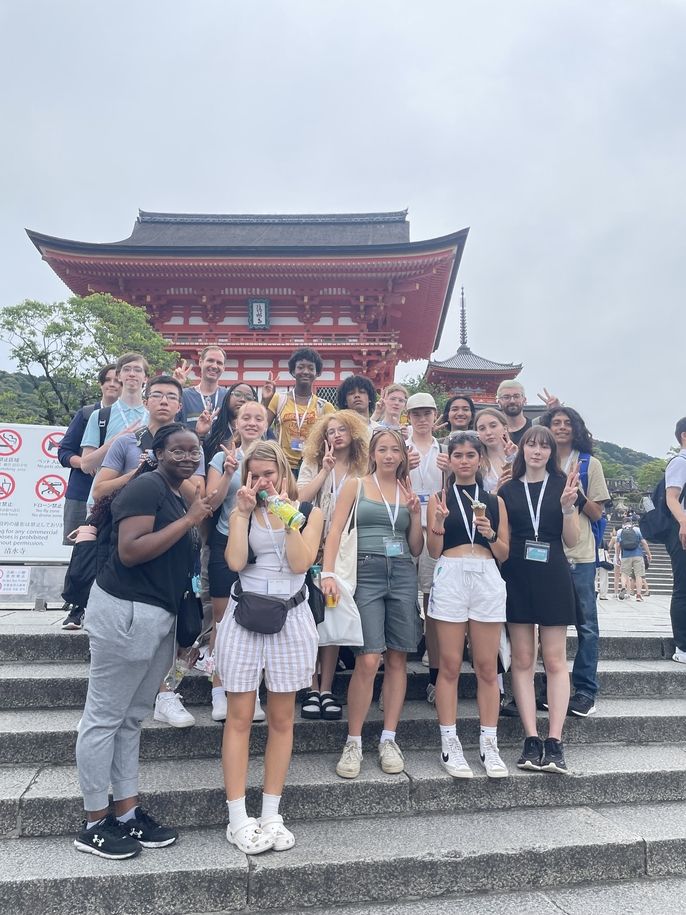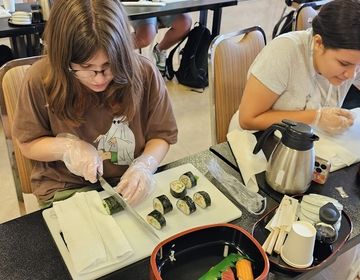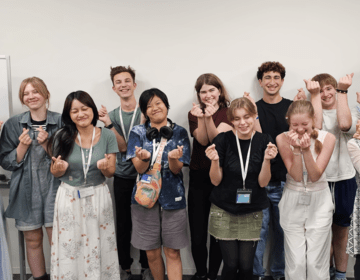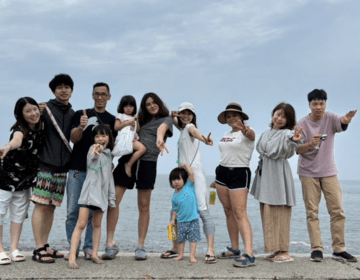Taking the plunge!
清水の舞台から飛び降りる. To take the plunge!
The phrase above, kiyomizu no butai kara tobioriru, literally means “to jump off the stage at Kiyomizu dera,” but is really an expression meaning “to take the plunge” into something difficult. And what bigger “plunge” than diving into a 4-week intensive language and culture course in another country!
A trip to Kyoto is rarely complete without a visit to Kiyomizu dera, one of the most famous sights within the city and a UNESCO World Heritage site. From the stage of the temple, we can see the entire city of Kyoto; and yet, Kiyomizu is actually older than the city of Kyoto by a solid ten years. Not a single nail was used in its construction; the temple is built using traditional techniques of wooden pegs and slots.
The climb to the top of the hill is a bit of a brute, especially in the heat, but CIEE students made it and were treated to the temple’s key feature: the pure water spring. 清水寺 (Kiyomizu dera) literally means “temple of the pure water,” and offers three springs from which visitors can drink. Each stream offers a different wish granted: life longevity, success at school, or a good love life. BUT- you may not drink from all three, because that’s greedy, so we’ll just have to come back some day.
Students also had the option on Friday morning of structured free time. They were invited to decide for themselves where they wanted to go; game centers, shopping arcades, karaoke, and restaurant-hopping were all popular options. A unique option was the Toji Market, an antique market held on the 21st of every month; students shopped for antique hairpins, clay figurines, kimono, all while snacking on takoyaki and grilled dango.
One thing students had the option to reflect on this week in their journals was the concept of community. Meal time is a constant in Japanese family life; breakfasts and dinners are eaten together and a time to decompress and discuss the day. While this can’t happen every day, host families make an effort to make it happen every day while hosting. Students were touched by the care given to family meal times, and the rich conversation that accompanied fabulous home-cooked food. It isn’t always possible to manage conflicting schedules, but it has been a delightful constant of the homestay experience here in Japan.
Community also shows in the care we show within our shared places, like living rooms and bathrooms. Japanese houses are 狭い; semai, or “narrow,” refers to the relatively tiny-ness of a Japanese home. But that means that we all need to share the same tiny space, and are thus more conscious of the messes we leave. Students were surprised to learn that it doesn’t feel so small when we learn to care for it. Recycling, trash, and the cleanliness of the country are all reflected by this concept of “community”- care for it and it won’t feel so 狭い.
Living in a culture not your own can be hard, but Kyoto CIEE students have “taken the plunge” and are, every day, learning new things and finding new ways to amaze not just the staff or their host families, but themselves. がんばりましょう!
Related Posts
Level Up!
How do you “level up” in life? Video games give us all kinds of opportunities to level up; step on a toadstool and get an extra life, throw a banana... keep reading
One Time, One Meeting
一期一会。侘び寂び。おもてなし。 Ichigo ichie. Wabisabi. Omotenashi. Tea ceremony encapsulates much of what is central to Japanese culture, and much of what is central to Japanese culture can be difficult to translate... keep reading
Snippets from a Host Family Weekend!
One of the cornerstones of the Language and Culture session is the homestay experience. Rather than staying in a hotel, students are welcomed into the homes of a Japanese family... keep reading




